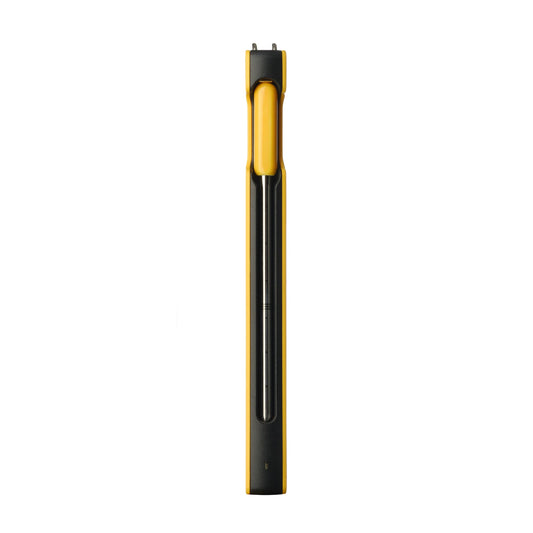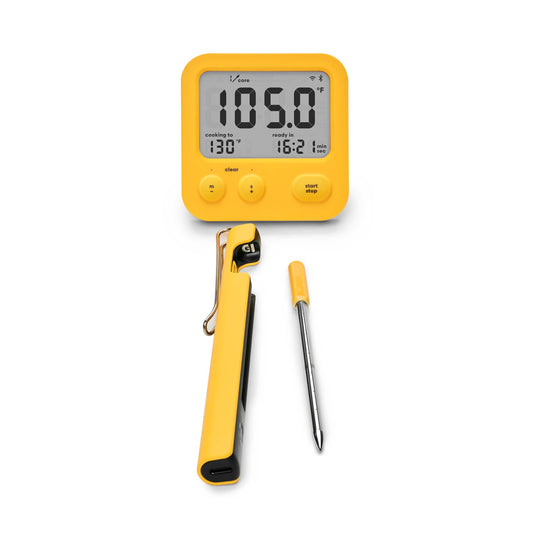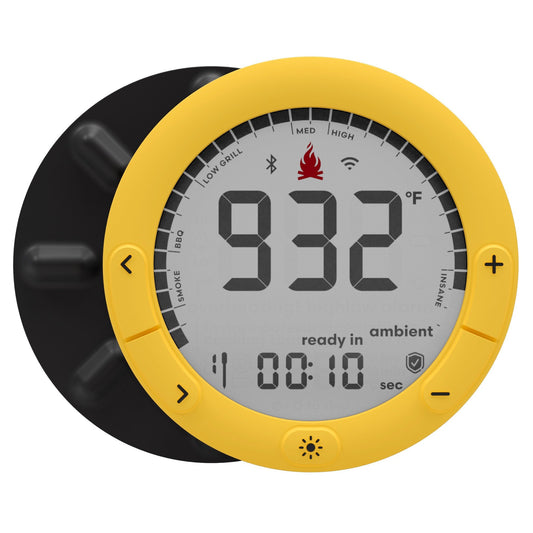How Combustion’s SafeCook™ determines when your food is safe
Share
Repeat after me: it’s never just temperature.
Government agencies have always presented the idea of food safety in a simplified way. You’ve probably seen the chart: 165ºF for chicken, 145ºF for steaks, and so on.
Those temps are the “instant death” numbers for salmonella. But they’re also overkill.
They’re intended for worst-case food-handling scenarios and the least competent food preparers.
Unfortunately, chicken breast cooked to 165ºF will be dry and desperately seeking gravy.
While chicken breast cooked to 150ºF (using SafeCook™) will be fork-tender, moist, slightly pink - and every bit as safe! No gravy required.
And steaks can be safely cooked as low as a very medium-rare 130°F.
Oversimplified rules lead to overcooked food
Combustion Inc’s new food safety feature SafeCook automatically factors in time and temperature. It’s easy to use and gives you the best possible results.
How to cook food that is safe and still delicious

Here's the step-by-step:
- Turn on your CPT + insert into food
- Open the Combustion App
- Where it says “Safeguard this cook with SafeCook” tap “Add”
- Toggle it on (the toggle will turn yellow)
- Choose your meat type (the default is “Poultry”)
- Choose the form that best describes your prep (for instance “intact cut” for a steak)
- The app will automatically show you the minimum safe cooking temperature and the required food safety standard*
- Tap “apply”
- This activates SafeCook
- When your food is safe, your app will display a green SafeCook badge
- SafeCook tracks all temps throughout the food - not just the core - ensuring everything is up to code
*USDA-FSIS guidance and FDA Food Code standards combining time and temperature.The complete documentation is nearly 800 pages; if you're interested there’s a link at the bottom of this post.
Streamlined food safety for uncompromised taste
SafeCook uses “integrated” AKA “cumulative” bacterial destruction to determine food safety. It adds up the body count of bacteria at every step in the cooking process.
This is the same standard commercial food preparers use. But with SafeCook, the Predictive Thermometer does all the math.
Chris (our founder, the inventor of the Predictive Thermometer, noteworthy chef, and generally nice guy) released a new video that explains exactly how and why food safety is always about TIME + TEMPERATURE.
If you're in a hurry, try this slightly D&D-themed summary:
- Bacteria starts dying above 130ºF
- The population of bacteria dies incrementally, based on time at temperature
- Given each increment of temp + time, 90% of the population dies (think of each bacterium rolling a d20 save and they need a 19 or 20 to survive!)
- Repeat this process with more increments of time + temp
- Every increment lowers the possible number of survivors by 90%
- Eventually the death rate will reach 99.99999%**
- Meaning about 1 in ten million bacteria are left alive (could be less)
- That’s when poultry is considered “safe” by the USDA
For example, chicken will almost always meet the safety standard within 30 seconds after reaching 150ºF.
That’s because the vast majority of bacteria already died in the time it took for the temp to rise from 130-150ºF!
TLDR: Just turn on SafeCook and you’ll know when your food is safe to eat - and you’ll never need to overcook it "just to be sure."
Some questions you may have:
What happened to USDA Safe? When we originally released our food safety feature (the first and only integrated safety feature in any thermometer, BTW), we included the option of “simplified” cooking - a path that led to the overcooked (overkill!) numbers everyone is familiar with. SafeCook does not support that option - we don't want to encourage people to ruin their meat!
If for some reason you’re using the “USDA Safe” version (please update your app!), the old instructions are still available.
What happened to "log7"? The government standards refer to "log" reductions - that's a 90% reduction in the bacteria population. So a log7 reduction is 0.9999999 aka 99.99999% destruction. Writing it in log form saves space on whiteboards (and in databases). The food safety standard for chicken is log7. Most other foods have slightly less-stringent standards.
SafeCook applies the correct standard for the food you select using the bacteria type (usually salmonella but not always) that is most prevalent for that food.
Is this only for chicken? No! It works on pretty much any food. We talk about chicken because poultry is the bad boy of meats, bacteria-wise. And because it's so easy to overcook!
Select your protein from the list - whether that's chicken, fish, beef, pork, seafood, or something else. SafeCook follows the current FDA Food Safety Code and USDA-FSIS recommendations based on the food you choose.
Is this backwards compatible? Yes. This is another free upgrade for every Predictive Thermometer we’ve ever made. The CPT keeps getting better, even after you’ve bought it - that’s the magic of firmware updates. Apply the new firmware after you've updated your Combustion app.
Do I have to cook my food to a USDA-level of food safety? Not if you’re cooking for yourself. Thankfully the health department doesn’t have the authority to tell you how to cook in your own home. But a lot of folks overcook their meats out of fear.
We wanted to make it easy to cook juicy, delicious food without you worrying that it might make you sick.
BTW, in restaurants, if the food is cooked and served immediately, and by request cooked a certain way (e.g. rare steak or eggs sunny-side up) that’s also okay. The restaurant is required to let you know that eating rare or undercooked foods comes at a higher risk - most places put this right on the menu (in small type, at the bottom).
What about non-US people? Food standards vary by country, but they’re all similar because bacteria don’t recognize international borders. While some countries have slightly more conservative standards, the US-centric standards still provide a very high level of food safety (we are looking into localization options).
What about commercial use? For commercial use we'll want to have each thermometer certified and traceable against a NIST-standard of accuracy. You'll also likely need more specifics about the target pathogen and standards being applied to keep your health inspector happy.
This is coming! It’ll be part of an optional software upgrade that makes record keeping easy for food industry professionals. Everything you need to comply with your local health department or process authority.
REFERENCES:
Official US Government Standards (used in SafeCook™ and USDA Food Safe):
For those who haven't updated their app yet:
LEGAL STUFF:
All home cooking is at your own risk. No warranty or guarantee of safety is implied. Please read the full terms below. That said, there are plenty of people eating food that doesn’t meet the government food safety criteria. Rare steak! Sushi! Intact cuts (like steaks) of properly-handled food are generally safer than most people imagine.
Use your own best judgment.
FULL TERMS:
All home cooking is at your own risk. Combustion has used reasonable effort to ensure that the "SafeCook" feature is accurate and follows the guidance contained in the 2022 FDA Food Safety Code and USDA FSIS Cooking Guidelines for Meat and Poultry Products Revised Appendix A. However, Combustion LLC does not give any express or implied warranty as to the accuracy, correctness, and completeness of the information provided by this feature, that it is free of bugs or defects, that it will guarantee food is safe for consumption and will not cause food borne illness, or that this feature will be suitable for any purposes other than to provide general consumer education about factors the contribute to food safety.


